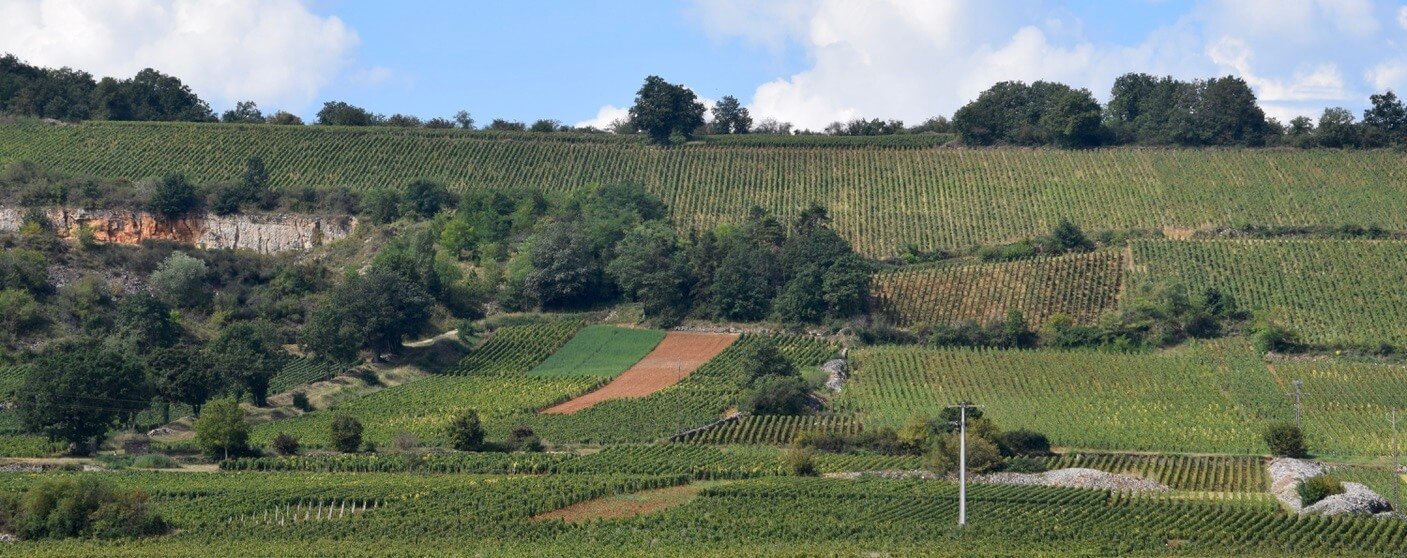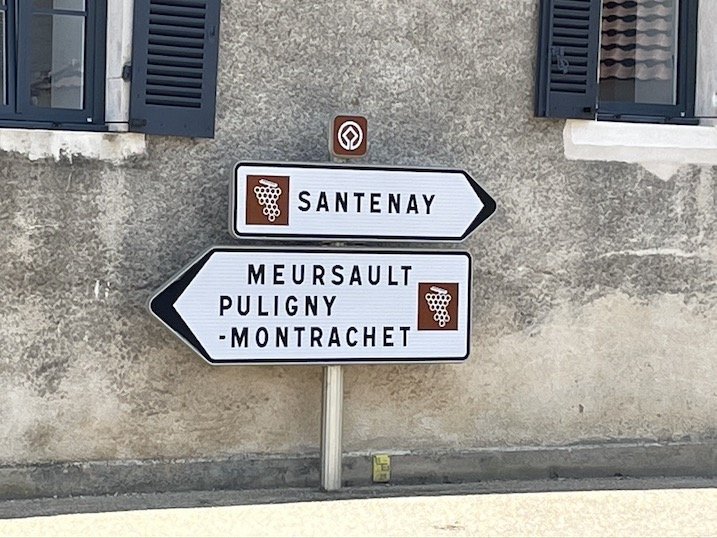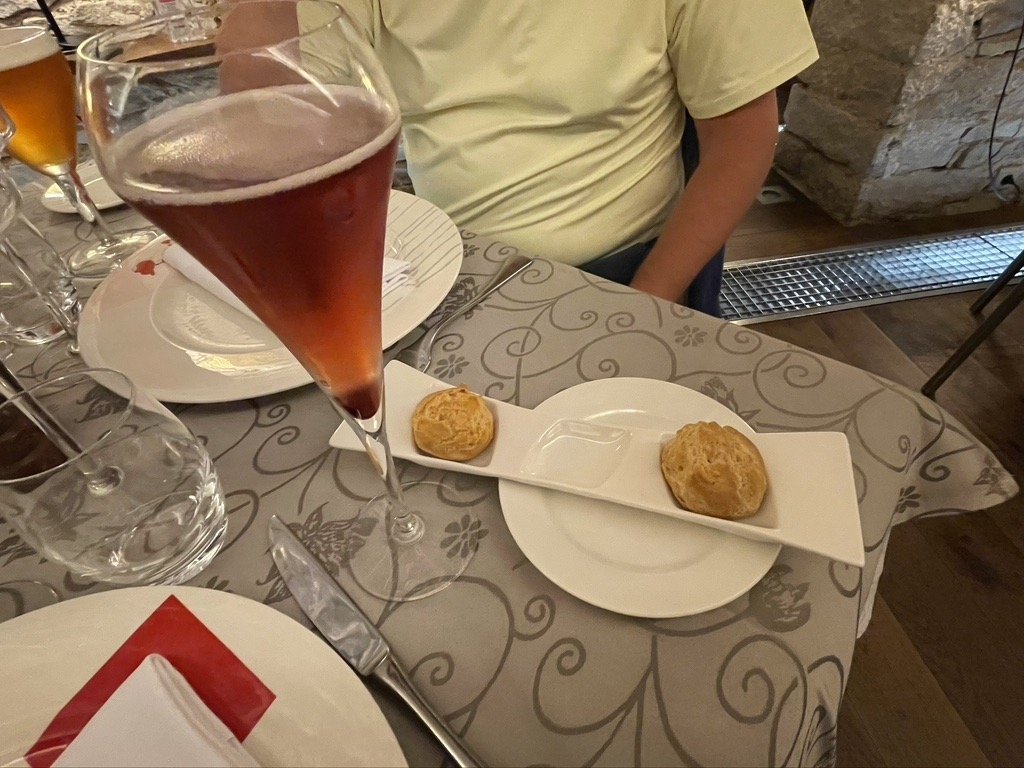FRANCE’S BURGUNDY WINE REGION

Burgundy’s famous villages & vineyards
Photo source: Winekeller
Our wine tour experiences in France’s Burgundy wine region:
France’s Burgundy wine region: an introduction
France’s famous Burgundy wine region has produced some of the world’s most celebrated wines for over 2000 years. Burgundy, or Bourgogne in French, is a province of eastern France and is famous the world over for its amazing red Burgundy wines, made from Pinot noir grapes and white Burgundy wines, made from Chardonnay grapes.
As well as producing some of the best wines in the world, Burgundy was once the richest of the ancient duchies of France and as a wine region, has one of the longest histories. Despite its riches and world-standing, the people of Burgundy are known for being incredibly welcoming and down-to-earth.
For wine tourists, these are already enough reasons for visiting this wonderful French wine region, but when you factor in that Burgundy is also known as the gastronomic heart of France, then you need to ensure it’s on your list of places to explore!
Château Corton-André, Côte de Nuits
The stunning Hotel Dieu in Beaune
Roche du Solutré, Mâconnais
Cycling the Côte de Beaune
Vineyards in Burgundy
Vineyards in Burgundy, or ‘domaines’ are very small and fragmented, with wine growers owning and farming small plots (or ‘climats’), of land across multiple vineyards. There are some 1300 vineyards in Burgundy and this whole area is a UNESCO World Heritage Site.
In Burgundy, the concept of “terroir” is very important as it’s the soil that gives its name to the wine
The large number of small plots of land is due to French inheritance laws and is why a vast amount of Burgundy wine is handled through ‘négociants’ or shippers, who blend small quantities of wine to create standard quality Burgundy wines from a given AOC. Most of the larger négociants are significant vineyard owners themselves.
You will notice that Burgundy’s famous vineyards are separated by stone walls and iron gates, reflecting their unique terroir and to protect their precious produce.
The vineyards in Burgundy are based on limestone from the Jurassic period and the climate is broadly continental, with heavy rainfall, hail and early frosts not uncommon.
The climate and terroir is quite different across the region, influencing the style of wine. The mainly chalk soils and northern location of Chablis for example, produces quite austere white, chardonnay wines, with a greenish tinge, whilst in the more southern region of Mâconnais, the Chardonnay wines are fuller and more ripe, but less elegant.

The famous vineyards in Burgundy - Photo source: Winekeller
Burgundy wine - Bourgogne wine
The Burgundy wine region incorporates several different districts and famous wine regions, with the most important being the Côte d’Or - or the ‘Gold Coast’, comprising the vineyards of Côte de Nuits - home of Burgundy’s greatest red wines - and Côte de Beaune - home of Burgundy’s most revered white wines. The upper slopes of the Côte d’Or are called the Hautes-Côtes, rising to over 400m.
This 80km stretch of vineyards, from Dijon in the North down to Santenay in the South, is Burgundy’s heartland and the ancestral home of Pinot noir and Chardonnay.
Burgundy also includes the illustrious Côte Chalonnaise wine region, famous for its lighter, white and red wines and the Mâconnais region in the south, famous for its fabulous, riper, white wines. In the far north of Burgundy, you can’t forget Chablis and its famous Chardonnays. South of Mâconnais is the wine region of Beaujolais, quite distinct from the rest of Burgundy and treated separately.
The regions of Burgundy:
The regions of Burgundy - Source: Wine Folly
Burgundy’s heartland of the Côte d’Or: Côte de Nuits and Côte de Beaune - Source: Jancis Robinson
Burgundy Pinot noir and Burgundy Chardonnay
The wine region of Burgundy has one of the world’s least varied ranges of vine varieties. Almost all of Burgundy’s best red and white wines are made from just 2 grape varieties, Pinot Noir and Chardonnay - grown the world over but develop the most perfect interpretation in Burgundy. Other grape varieties include the red Gamay variety and white Aligoté.
Burgundy wine classifications & appellations
There are 4 classifications of Burgundy wines - think of it like a pyramid:
On the base - about half of Burgundy wines are regional/district appellations - eg Bourgogne Blanc and Mâcon-Villages
Next is the Village or Commune appellations, taking their name from the village where the grapes were grown - eg Meursault
Premier Cru Burgundy wines (15-20% of the total) reflect specific individual plots within the appellations Village - eg Volnay 1er Cru and Chablis 1er Cru
Then at the top of the pyramid, representing less than 5% of Burgundy wines, the world-famous and exceptional Grand-Cru appellations - reflecting unique characteristics from exceptional plots, where the name of the village is replaced by a single Climat name - eg Corton Charlemagne, Clos de Tart and Montrachet.
The famous vineyards of Meursault - Photo source: Winekeller
There are more than 80 appellations - or AOCs - most referring to geographical areas. Here are some of the main ones:
Côte de Beaune region: Côte de Beaune, Hautes-Côtes de Beaune, Santenay, Chassagne-Montrachet, Puligny Montrachet, Meursault, Volnay, Pommard, Savigny-Lès-Beaune, Aloxe Corton
Côte de Nuits region: Côte de Nuits, Hautes-Côtes de Nuits, Nuits-St-Georges, Chambolle-Musigny, Morey-St-Denis, Gevry-Chambertin, Marsannay
Côte Chalonnaise region: Montagny, Givry, Mercurey, Rully
Mâconnais region: Mâcon, Mâcon-Villages, Pouilly-Fuissé, Pouilly-Vinzelles, Pouilly Loché, St-Véran, Viré-Clessé, Mâcon-Prissé
Chablis region: Chablis Grand Cru, Chablis Premier Cru, Chablis, Petit Chablis
Recommended Burgundy wineries to visit - domaines and négociants
See winery recommendations in each blog.
Visiting France’s Burgundy wine region - Travel guide and other useful information
Burgundy is one of the great historic regions of France and today is famous the world over for its wines. Aside from wine there’s lots to see and do in Burgundy, with its unspoiled countryside, its historical cities and towns, its monuments and of course, Burgundy cuisine!
Burgundy is made up of four French departments. In the north-west of the region, the department of the Yonne, a rolling agricultural area; in the west, Nièvre a hilly region that includes the highest peak of the Morvan hills; the Côte-d'Or around Dijon in the north-east and the department of Saône & Loire in the south. The historic and modern capital of the Burgundy region is Dijon.
The Palais des Ducs in the beautiful Place de la Libération, Dijon - Source: Winekeller
When to visit Burgundy
September-November is a great time to explore Burgundy as the vineyards are displaying their wonderful colours, but May-June is also excellent as it’s cooler and less crowded compared to the busier Summer months.
Try to plan your visit or wine tour to incorporate a local wine festival - you will find a list of the festivals for 2022 in this excellent festival guide from ‘vins de Bourgogne’.
How to get to Burgundy
Burgundy lies between Paris and Lyon, so if you are travelling down to the south of France by car or by train, you will pass through it.
There is no major airport in Burgundy, but the north of the region can be easily reached by train and road from Paris. Geneva or Lyon airports are closer for visiting the south of the region.
What to do and see in Burgundy
Burgundy’s long, fascinating history and rich heritage provide a wonderful legacy today, with lots for the visitor to discover and enjoy.
Drive the Burgundy wine routes or do a Burgundy bike tour
In addition to visiting Burgundy wineries and doing some wine-tasting, take time to appreciate this beautiful French wine region by driving its Burgundy wine routes. The most famous is the ‘Route des Grands Crus’, which takes you through the villages and vineyards of some very illustrious and prestigious names including, Meursault, Gevrey-Chambertin, Clos de Vougeot, Nuits St Georges, Pommard, Aloxe-Corton and Puligny-Montrachet.
Instead of driving, maybe hire bikes and enjoy a bike tour of Burgundy. We can suggest Bourgogne Randonnées in Beaune.
Follow the Route des Grands Crus
Enjoy discovering Burgundy by road….
Enjoy the beautiful waterways
Discover Burgundy by boat and enjoy a trip on the Burgundy Canal (Canal de Bourgogne) and rivers Saône and Yonne.
Discover the Cote d’Or region
For wine lovers, this is the region of Burgundy you definitely need to go to! Visit the region’s capital, Dijon, famous for its well-preserved architectural heritage. See the famous Palace of the Dukes of Burgundy and explore other sights along the city walking trail - Owl’s Trail (Parcours de la Chouette).
Spend time in beautiful Beaune - famous of course for its vineyards and its wines, but make sure you visit the medieval hospital, Les Hospices de Beaune - or Hotel Dieu. Take a tour of this beautiful, 15th century gothic former hospital, today housing a museum and art gallery and marvel at its famous, distinctive, tiled roof. Every 3rd Sunday in November a world-famous charity wine auction dating back to 1851 is held here.
Visit the Abbey of Fontenay, founded in 1118 - the most visited monument in Cote d’Or and a UNESCO World Heritage Site.
For more about visiting the Cote d’Or, see here
Do some wine-tasting!
Visit the Hospices de Beaune
Église Saint Michel, Dijon
Discover the Yonne region
The home of Chablis, so your visit here needs to include some wine tasting, but also a visit to the small town of Chablis! There are plenty of lovely towns and villages to explore in the Yonne, including Auxerre, a popular centre for boating on the Yonne and Burgundy canal (see earlier), the walled town of Avallon and the hilltop village of Montreal.
Visit the Abbaye de Vézelay (UNESCO World Heritage Site), starting point of one of the main pilgrimage routes to Santiago de Compostella and the Abbaye de Pontigny, another superb French Cistercian monastery and where Thomas Becket, Archbishop of Canterbury under the English King Henry II, sought refuge from 1165 to 1166.
For more information about visiting the Yonne region, see here.
Discover the Nièvre region
Nièvre is a region for those who love being outdoors, with the lovely Morvan national park, providing lots of opportunities for woodland walks, scenic hikes and bathing in the many beautiful lakes.
Visit the historic town of Nevers and its Renaissance chateau, the Dukes Palace and the abbey complex and town at La Charite-sur-Loire, now a UNESCO listed world heritage site.
For more information about visiting the Nièvre region, see here.
Discover the Saone & Loire region
Less established in terms of tourism than the northern parts of Burgundy, but there is still lots to explore.
Top of the list is the famous 11th century Benedictine Cluny Abbey, once the largest church in Christendom, followed by the cathedral at Autun - one of the finest romanesque cathedrals in France.
Visit the towns of Tournus and Mâcon and also the picturesque village of Semur-en-Brionnais, listed as among the "plus beaux villages de France".
For more information about visiting the Saone & Loire region, see here.
Inspecting the ruins at Cluny Abbey
Semur-en-Brionnais in Saone & Loire
Morvan National Park, Nièvre
Burgundy food and traditional Burgundy dishes
As in other wine regions around the world, wine plays a key role in traditional Burgundy dishes - specifically red wine.
The most famous Burgundy dish is ‘Boeuf Bourguignon’ - made normally with Charolais beef from Burgundy, cooked in the classic French red wine sauce, with onions and mushrooms.
You also can’t go wrong with chicken, look for the famous free-range Bresse chickens. Think coq-au-vin and see if you can find on a menu the famous Burgundy dish, Gaston Gérard chicken, cooked with ‘Dijon’ mustard.
Of course you can’t avoid the famous Dijon mustard whilst in Dijon, but also look out for the drink ‘kir’, normally drank as an aperitif, made from sparkling wine, usually Crémant de Bourgogne and crème de cassis blackcurrant liqueur.
Another traditional Burgundy dish is ‘oeufs en meurette’, eggs poached in red wine, served with a meurette or a bourguignon sauce.
Try ‘jambon persillé’, a French appetiser consisting of ham hock that is simmered in white wine and made into a terrine with lots of parsley.
Burgundy menus will often feature snails - ‘escargots de Bourgogne’ and ‘la matelote d'anguille à la bourguignonne’ (eels stewed in wine sauce). Freshwater fish from the Saone river, including tench, perch, eel, carp, pike, also feature in recipes, cooked in white wine.
The use of red wine extends to desserts - look out for ‘Poire Belle Dijonnaise’, pear poached in wine.
There are lots of regional cheeses to enjoy and give gougères a try - cheese pastry puffs, often served with drinks or as an appetiser!
Boeuf Bourgignon
Burgundy escargots!
Kir and Gougères
Burgundy cheeses
Plate of charcuterie & fromage
Jambon persillé
Ham & eggs Burgundy style
Poire dijonnaise
For more information about visiting the Burgundy wine region, see:


















We spent 2 wonderful days biking in Burgundy - exploring the famous Côte d’Or region and the Côte de Beaune and Côte de Nuits villages and vineyards. Read all about our brilliant Burgundy bike tour and start to plan your own..!